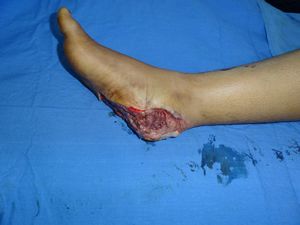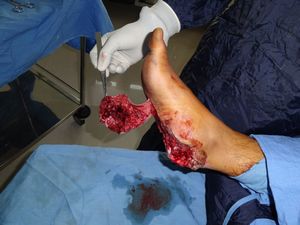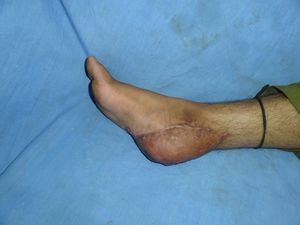Free Flap



The terms free flap and free tissue transfer are synonymous labels used to describe the movement of tissue from one site on the body to another. "Free" implies that the tissue, along with its blood supply, is detached from the original location ("donor site") and then transferred to another location ("recipient site"). This is in contrast to a "pedicled" flap in which tissue is left attached to the donor site and simply transposed to a new location keeping the "pedicle" intact as a conduit to supply the tissue with blood. Various types of tissue may be transferred as a free flap including skin and fat, muscle, nerve, bone, or any combination of these. An example of the latter would be a "free toe transfer" in which the 1st or 2nd toe is transferred to the hand to reconstruct a thumb. For all free flaps, the blood supply is reconstituted using microsurgery to reconnect the artery (blood into the flap) and vein (allows blood to flow out of the flap). The free flap requires microsurgical techniques and is utilised during reconstructive surgery.
Free flaps may be done for a number of reasons, including:
Most commonly creating a breast after a mastectomy. This may happen at the time of mastectomy or at a later date. Free flaps are usually only done if a TRAM flap is not possible. Plastic surgeons usually perform these surgeries.
Some area of the body has missing tissue either from a trauma or from some existing wound. This may include areas on the leg where bone is exposed or any other area on the body which needs soft tissue coverage prior so that a skin graft will be successful.
Some Head and Neck, Otolaryngologists, and Oral and Maxillofacial surgeons will excise a tumor from the head and neck leaving a large tissue defect, and then use one of a variety of techniques to reconstruct the wound--often free flaps are needed. If the cancer involves a part of the lower jaw (mandible) then often the fibula will be transplanted as a free flap for reconstruction of the jaw (replacement of the removed mandible)--although other options including bone grafts exist.
Free flaps all have common steps. These do not necessarily occur in order:
The most common serious complication of a free flap is loss of the venous outflow (e.g. a clot forms in the vein that drains the blood from the flap). Loss of arterial supply is serious too and both will cause necrosis (death) of the flap. Close monitoring of the flap both by nurses and by the surgeon is important postoperatively. If caught early, loss of either the venous or arterial blood supply may be corrected. Many times an implantable doppler probe or other devices can be installed during surgery to provide better monitoring in the postoperative period. The doppler probe can be removed before discharge from the hospital. Usually donor sites are selected which will cause the least amount of disability but some disability may occur. Other complications which may occur with any surgery are also possible including infection and pain.